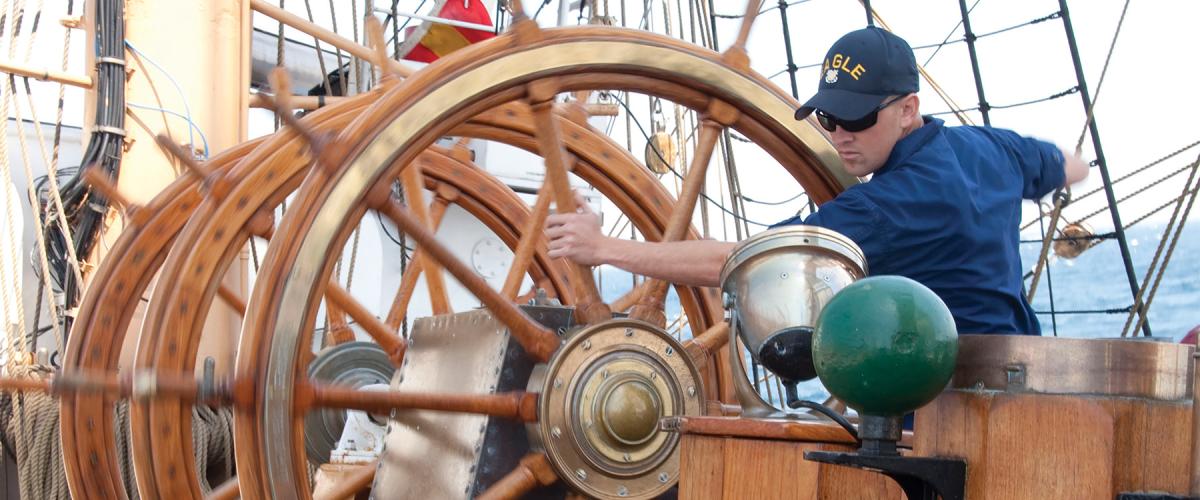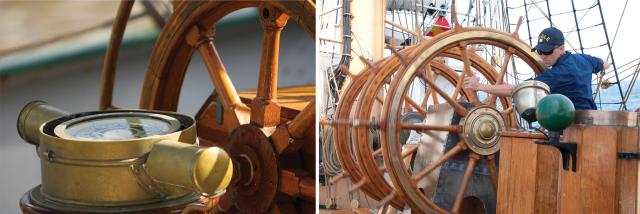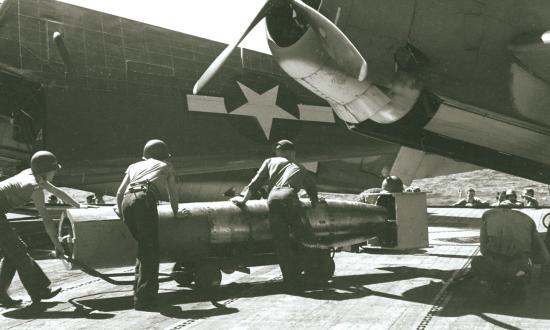The Earth has a core of molten iron that provides it with a strong magnetic field, a phenomenon vital to life. The magnetic field shields us from much of the sun’s more harmful radiation, diverting it past the poles and away into space. Without its protection, the planet would be stripped of most of its atmosphere, reducing it to a dry, rocky wilderness. But a magnetic field provides other benefits, too. It helps animals as diverse as migrating birds and ocean-crossing whales to navigate, and sailors have long used it to help find their way.
Early navigators relied on celestial observation to steer their ships beyond the sight of land. The track of the sun across the sky provided this during the day, while in the Northern Hemisphere the bright star Polaris showed where north lay at night. But observing stars requires a clear sky, and even the location of the sun during the day can be obscured by heavy clouds. In temperate regions, and especially in winter, the sky can be overcast for long periods. In response, mariners began to search for reliable alternatives to use in poor weather.
Interest centered on a mysterious substance called lodestone, a naturally occurring magnetized form of the mineral magnetite. One of the earliest known references to lodestone’s properties was made by the ancient Greek philosopher Thales of Miletus in the 6th century BC, who noted that a fragment of the mineral will turn toward the north when suspended from a string. He also observed that this same characteristic could be transferred to a small piece of iron by rubbing one end of it with lodestone. In ancient China, too, there was interest in the mineral. References to its properties occur in Han texts, although the Chinese were concerned mainly with using it for divination and the propitious orientation of buildings, rather than any benefit to seafaring.
The first magnetic compasses were very crude and would have served only as an emergency method for a sea captain unable to navigate in any other way. Typically, such a compass consisted of a needle that lodestone had magnetized. This was thrust into a piece of cork or straw and floated on a bowl of water. The needle would then turn on the surface to point toward the north. This method was fine as a backup when all else failed, but it had many practical difficulties, not least that of holding a bowl of water steady on a ship. By the medieval period, shipborne commerce’s importance was growing, and a more reliable solution was required.
In the 13th century, the first French and Italian descriptions of a new type of compass appear in the historical record. The general design was of a bowl, usually carved from wood, with a nail driven up through the base. Instead of resting on the surface of a liquid, the iron compass pointer was attached to a hollow cone of brass that rested over the tip of the nail. A round card with the cardinal points was attached to the needle and the compass was encased in a protective box. By the 15th century, such box compasses were in common usage—Columbus writes of taking bearings with one in his account of his voyages. Around this time, box compasses started to appear in portraits of seafarers to indicate their profession. A good example is the picture of Lord Clinton and Saye, who was Lord High Admiral of England in 1562.
Once compasses were reliable, they became the main method of determining direction on board ships. Larger and more robust versions were mounted prominently in a binnacle where the captain and helmsmen could easily refer to them. Over time, various improvements were made: The compass bowl was fitted between gimbals to keep it flat, and the binnacle was lit by oil lamps at night. Some navigators noticed that the magnetic north pointed to by a compass was a few degrees adrift from the true north shown on their charts. The solution was to offset the compass card a little to correct for this, a process that needed repeating every few years as the earth’s magnetic field shifted. But as ship’s compasses continued to develop, more worrying inaccuracies in their performance began to appear.
The Royal Navy’s Captain Matthew Flinders noticed a problem with his ship’s compass on his mapping expedition around the Australian coast in 1802. After careful study, he concluded that it was caused by the attractive effect of iron fittings in his ship. He reasoned that this would be constant for a given vessel, provided the fittings close to the compass were not moved or changed. This led him to carry out experiments to correct for this on his own ship, and after several trials he found a solution: an unmagnetized rod of iron positioned vertically near the compass. What became known as a Flinders Bar was a widely adopted innovation still in use in small boats today.
The Flinders Bar worked well to correct for the modest effect of the few iron fittings to be found on a wooden ship, but the 19th-century advent of vessels made almost entirely from iron and steel led to a further dangerous drop in compass accuracy. Something more sophisticated was going to be required to allow all-metal ships to navigate safely. Sir George Biddell Airy was the seventh Astronomer Royal—a position created by Charles II in 1675 to help solve navigational problems—and who was given the task of finding a solution. In 1838, he worked on the steamer Rainbow, placing small magnets around the binnacle. Eventually, he found a configuration that compensated for the ship’s magnetic field. This tuning process is still carried out today when a magnetic compass is fitted to a steel ship. Since no two ships have the same magnetic field, the placement of the corrective magnets is unique to each one.
There was a further change to the ship’s compass that coincided with the move from sail to steam power. The vibration produced by a ship’s engines was much greater than that encountered on board a sailing ship. This meant that compass cards suspended in air became difficult to read accurately. The solution was to fill the compass bowl with liquid. This effectively dampened any vibration, and all commercial magnetic compasses are now of this type.
The compass’s final development was a move away from magnetism altogether with the introduction of the gyrocompass. (See “Inertial Navigation Made Ballistic-Missile Submarines a Reality,” June 2018.) These use the innate gyroscopic stability of a rapidly spinning wheel. Once this is aligned, so long as the wheel keeps spinning, it continues to point in the same direction irrespective of any course changes the ship makes. The new type of compass has two key advantages over its magnetic predecessor: It can be aligned with true north, eliminating the need to correct for the vagaries of magnetic north, and it is unaffected by a ship’s magnetic field. Its primary disadvantage is that it requires continual electrical power to remain accurate.
The new compass was developed independently on both sides of the Atlantic. In Germany, Hermann Anschütz-Kaempfe invented the first usable gyrocompass in 1906. After successful tests, the Imperial German Navy adopted it two years later. At the same time in the United States, Elmer Ambrose Sperry came up with a rival version adopted by the U.S. Navy in 1911 that played a major role in World War I. The World War II submarine tender USS Sperry (AS-12) was named in his honor.
The new compasses were adopted widely, and by World War II most warships had them. The usual arrangement was one master gyrocompass with various repeaters located at different places on the ship, which still predominates today. Mechanical gyroscopes are beginning to be replaced by ring-laser or hemispherical-resonator ones, but most ships retain a traditional magnetic compass as a backup because they require no power source—just in case.









